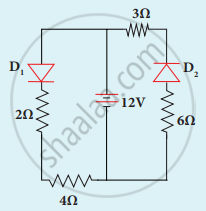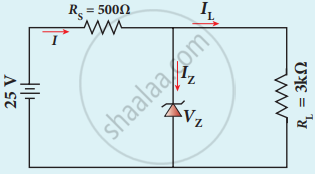Advertisements
Advertisements
प्रश्न
Give the principle of solar cells.
उत्तर
A solar cell is a device that directly converts the energy of light into electrical energy through the photovoltaic effect. Solar cells or photovoltaic cells are made based on the principle of the photovoltaic effect. They convert sunlight into direct current (DC) electricity. But, a single photovoltaic cell does not produce enough amount of electricity.
APPEARS IN
संबंधित प्रश्न
In an unbiased p-n junction, the majority of charge carriers (that is, holes) in the p-region diffuse into the n-region because of
If a positive half-wave rectified voltage is fed to a load resistor, for which part of a cycle there will be current flow through the load?
A diode is called a unidirectional device. Explain.
Distinguish between avalanche breakdown and Zener breakdown.
Write a short note on diffusion current across the p-n junction.
List the applications of light emitting diode.
Write notes on the photodiode.
Explain the working principle of a solar cell. Mention its applications.
Determine the current flowing through 3 Ω and 4 Ω resistors of the circuit given below. Assume that diodes D1 and D2 are ideal diodes.

In the given figure of a voltage regulator, a Zener diode of breakdown voltage 10 V is employed. Determine the current through the load resistance, the total current and the current through the diode. Use diode approximation.

